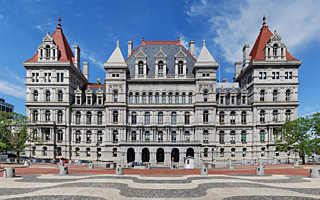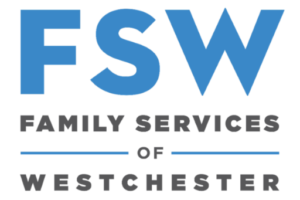 When Governor Andrew Cuomo signed the first on-time state budget in five years, Albany watchers and many average New Yorkers alike praised lawmakers for avoiding the dysfunction that made last year’s budget a point of widespread embarrassment. Recent polling data from Siena College shows an uptick in popularity for the governor, putting Cuomo’s favorability rating at a sky-high 73%. However while polls show New York voters feeling good about their lawmakers after the budget fight, they’re still down on the budget itself; and though Cuomo emerged the big winner, local schools appear to be the big loser.
When Governor Andrew Cuomo signed the first on-time state budget in five years, Albany watchers and many average New Yorkers alike praised lawmakers for avoiding the dysfunction that made last year’s budget a point of widespread embarrassment. Recent polling data from Siena College shows an uptick in popularity for the governor, putting Cuomo’s favorability rating at a sky-high 73%. However while polls show New York voters feeling good about their lawmakers after the budget fight, they’re still down on the budget itself; and though Cuomo emerged the big winner, local schools appear to be the big loser.
By big majorities, 61% of voters say that teachers’ unions and 57% say that their local school districts were losers, according to Siena spokesman Steven Greenberg. In Westchester County, however, those big majorities may be wrong. “Westchester is making out like a bandit,” said Rick Timbs, executive director of the Statewide School Finance Consortium. Timbs’ organization, which is an advocacy group representing public school districts across the state, crunched the budget numbers for every school district in New York. With $1.2 billion in cuts to statewide school aid, every district is taking a hit. But Timbs says the cuts will disproportionately hurt poorer upstate districts, while many wealthier counties in the lower Hudson Valley will remain relatively unscathed. “Whether you look at the average or you look at each district, Westchester does very, very well,” said Timbs. “Far beyond what it should if a formula for cuts were really based on equity.”
According to Statewide School Finance Consortium figures, the average cut in state aid per student is $937. On average, Westchester County is seeing only a $636 cut. On a per-student basis, Irvington’s $287 cut is one of the smallest in the state. That works out to about a 1 percent reduction in state aid, according to Timbs. For the Tarrytowns school district, the Statewide School Finance Consortium estimates a $1.3 million cut. But Tarrytowns Superintendent Howard Smith says the actual number is much lower. “The net loss to us for next year works out to be $357,000,” said Smith.
Smith says that while the budget hit is relatively small, it still hurts. His district of 2,800 students was initially considering potential layoffs. In the governor’s original proposal, Smith says the Tarrytowns were looking at a $730,000 cut; but after lawmakers restored about $300 million in statewide education aid during late budget negotiations, Smith says the district’s reduction was basically cut in half. Now Smith says the district will make no layoffs or program cuts. To cover the reduction in state aid, Smith says the Tarrytowns Board of Education is asking voters to approve an additional 0.7 percent increase on the district’s tax levy. “We’re being very direct with taxpayers,” said Smith. “This is money that the state was sending us. We’re asking you to add it because we need to recover that lost revenue – otherwise we have to lay off $357,000 worth of teachers.”
Smith admits that the fix for upstate districts won’t be so easy. He says that it’s not uncommon for an upstate district to get 60 to 70 % of its revenue from state aid. For the Tarrytowns, Smith says state money accounts for just 15% of the district’s revenue. “There are clearly some real inequities,” said Smith, of the upstate districts getting hit much harder by state cuts, “but I don’t think that wealthier districts necessarily got more than their fair share. I just think that the upstate districts did not get anywhere close to their fair share.”
While most Westchester districts will be able to absorb state education cuts, the Statewide School Finance Consortium’s Timbs says many aid-dependent districts upstate will be forced to cut programs, staff and cash reserves – while potentially raising taxes. By comparison, Timbs says a district near Rochester that’s roughly the same size as the Tarrytowns is facing a 6% budget cut. According to Timbs, it would have to raise its tax levy by 21% to absorb the reduction in state school aid. A New York State School Board Association spokesman was recently quoted as saying that massive layoffs would be unavoidable. For most of Westchester County, both Timbs and Smith say, that’s simply not the case.
[blockquote class=blue]Zachary R. Seward covers State government and the economy in upstate New York[/blockquote]






